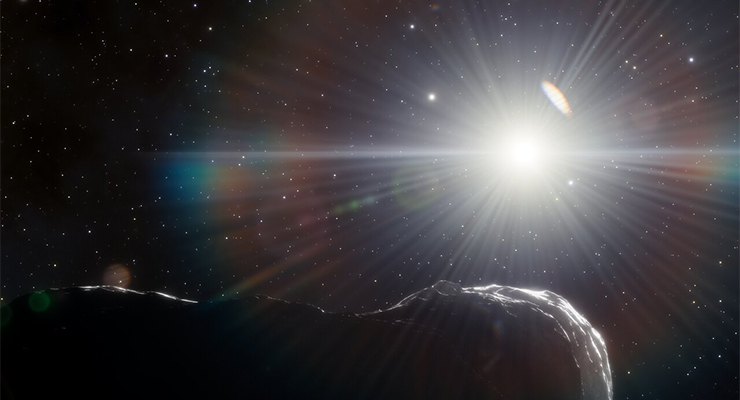
Any near-Earth asteroid with a plus-1km girth takes home the title of “planet killer”. Astronomers have just discovered a second. It’s the largest “potentially hazardous” asteroid within the orbits of Earth and Venus in the past eight years and among the top 5% ever.
The 1.5km-wide near-Earth asteroid (NEA) that goes by 2022 AP7 is one of three sun-drenched asteroids identified with the aid of a dark energy camera and a four-metre telescope by a US-run team at Cerro Tololo Inter-American Observatory in Chile.
The NEAs are part of an “elusive population” of asteroids within the orbits of Earth and Venus that sit in the shadow (rather, radiant glare) of the sun. Two of the three new NEAs sit safely within the Earth’s orbit and therefore pose no problems, but astronomers have not ruled out the possibility of a planetary plight with 2022 AP7. “Someday,” said the NSF’s NOIRLab in a science (not press) release. As such, it’s been deemed a “potentially hazardous” asteroid (PHA).
But the potentially hazardous properties of the asteroid offered more potential for media with headlines that skewed the threat timeline. The Guardian led its piece with a warning that the “planet killer” is “heading our way” before noting “we’ve got bucketloads of time”. News.com.au and Yahoo got a little ahead of themselves declaring the asteroid was “flying past Earth” and due to “whizz past Earth on Tuesday”.
The scientific consensus for Earth v 2022 AP7 is that the former has time on its side. But the dark spots created by excessive sunlight have led scientists to believe there may be more NEAs with potential (long-term) risks to the planet.
“Only about 25 asteroids with orbits completely within Earth’s orbit have been discovered to date because of the difficulty of observing near the glare of the sun,” said astronomer and lead author of the paper describing the discovery, Scott S Sheppard.
So what about the risk? How concerned should our great (to the power of x)-grandchildren be about the 2022 AP7 and its compatriots destroying the Earth and humanity?
In short: it’s a “potential” that would be deadly if it eventuated, but as is the possibility of another health pandemic, nuclear war, a large volcanic eruption, a coronal mass ejection (a cosmic event that would ultimately meddle with everything electrical on Earth) are also on the cards.
Then there’s death on account of climate change, which already has the numbers on its side. According to the World Health Organization (WHO), 25% of all deaths globally are due to environmental factors, including poor air and water quality, lack of sanitation and exposure to toxic chemicals.
The WHO has also tipped that between 2030 and 2050, climate change will cause about 250,000 excess deaths a year, due to malnutrition, malaria, diarrhoea and heat stress.
Much to look forward to.








Asteroids, unfit food, filthy air, fracking contaminated ground water!
Life was cleaner, easier and less contaminated in the 1950’s, I remember.
Then idiot politicians and greed overtook sense and ethics.
Glad it won’t be too long and I’ll be leaving for another dimension. Hopefully it will be heavenly!
Good time to be old.
That was the 3rd Bowdlerized attempt to comment – a 3 month subscriotion to anyone who can figure out why, if they appear, the other two were modbotted.
Nope, they’ve both been disappeared – to save an algorithm embarrassment?
We are already on several tipping points. When they kick in and other tipping points are hit things will escalate pretty damn quickly and that forcast of 250,00 per year will look pretty optimistic.